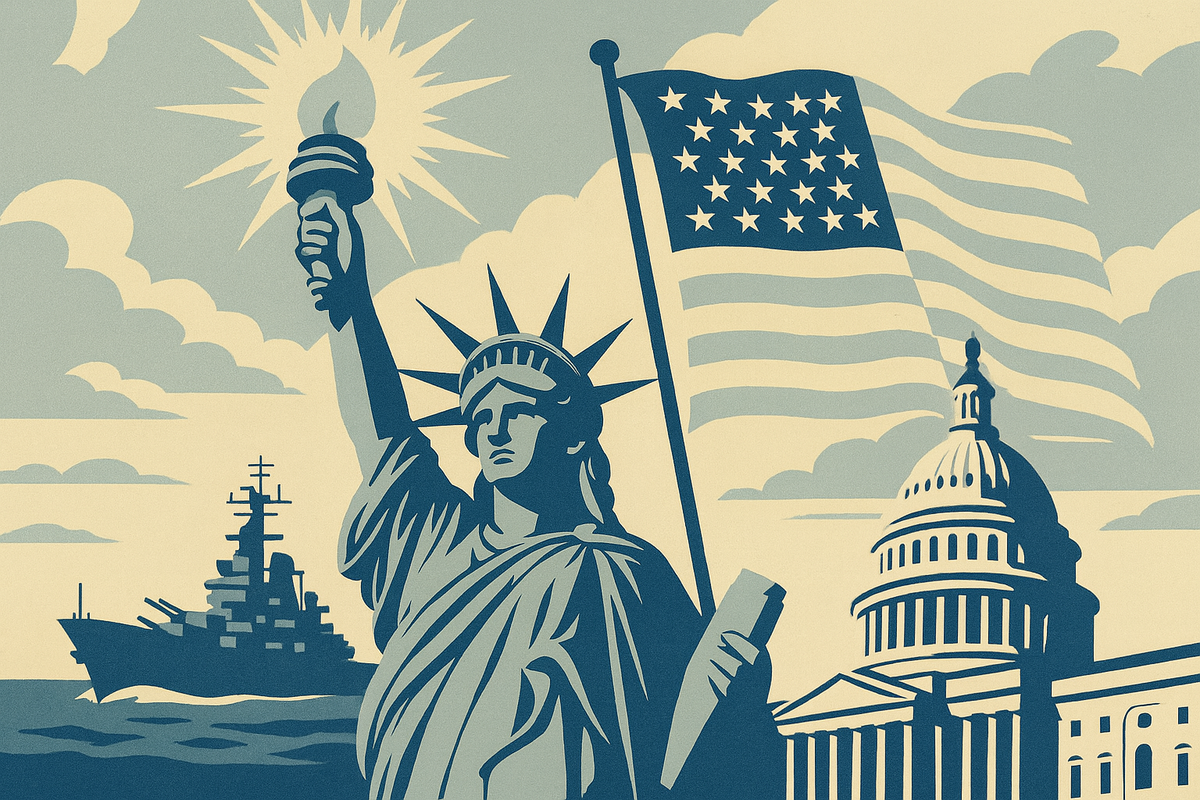The 1926 Playbook: How Trump’s America Mirrors a Forgotten Era of Global Stability

When I first argued that 2025 would echo 1926, the bold claim centered on the markets. But now, it’s clear this isn’t just a bull market analog—it’s a geopolitical one too. Just like in the mid-1920s, the world is entering a lull in global conflict, a moment of stability underwritten not by alliances or global institutions, but by a resurgent and self-confident America.
Under President Trump’s return to power, the United States has revived a distinctly American approach to global order, one that rejects the burdens of Pax Americana and instead encourages independent sovereignty while flexing overwhelming strength when U.S. interests are at stake. In this way, 2025 is developing an unignorable resemblance to the global trends that persisted in 1926 through the end of the decade
The breakout in U.S. equity markets this week signals more than just technical momentum, it reflects the return of strategic stability, and confirms that the next great American bull market is already underway.
A Forgotten Model of Stability: The Mid-1920s
By 1925, the world had entered a rare phase of relative calm. After the bloody aftermath of World War I and a series of short but intense conflicts, the Polish-Soviet War, the Greco-Turkish War, no major powers were at war. A wave of diplomatic treaties, like the Locarno Accords and the Geneva Protocol, aimed to institutionalize peace. The Washington Naval Conference temporarily capped militarization. The Kellogg–Briand Pact even outlawed war as an instrument of national policy (in theory).
But the true foundation of that calm wasn’t diplomacy. It was American economic hegemony. The U.S., under presidents like Harding and Coolidge, became the world’s creditor and supplier of capital. The Dawes Plan restructured German reparations. American banks financed Europe’s recovery. U.S. naval strength kept Pacific tensions in check. Yet crucially, this was not a Pax Americana of troops and treaties. It was a laissez-faire hegemony—commanding, but not entangled.
Trump’s Realignment
Trump’s “America First” policy is not isolationism, it’s selective nationalism. Like Coolidge, Trump believes every nation should prioritize its own interests. But where those interests intersect, on trade, deterrence, or peace, he expects coordination, not dependency.
In contrast to the post-WWII Pax Americana, which guaranteed peace through permanent military presence, Trump’s model resembles the 1920s: peace through strength, but without global babysitting. The U.S. won’t guarantee every border, but it will punish aggression that threatens its core interests. It’s a model of calculated and restrained dominance.
That same mindset prevailed under Coolidge. Immigration was sharply curtailed, military engagements were limited, and global leadership came not from a sense of moral obligation, but from unmatched industrial and economic leverage. Trump, whether consciously or not, has resurrected that template, and it’s working.
The Result: Conflicts Cooling, Capital Surging
We’re now witnessing the geopolitical version of a technical breakout:
- Russia is stalled in Ukraine, hemmed in by U.S.-enabled defenses and an exhausted economy.
- Iran’s regional ambitions are undercut by direct U.S. deterrence and backchannel diplomacy.
- China’s calculus on Taiwan has shifted, with economic pressure, defense alliances, and onshoring chip production raising the cost of escalation.
Much like the 1920s, the U.S. is enforcing stability through leverage. And markets, once again, are responding. Volatility is breaking lower. Defensive posturing is giving way to aggressive risk-taking. A new bull market is being born, not despite geopolitics, but because of the resolution they are quietly undergoing.
Preparing Based on the Late 1920s
One of the great historical lessons is that the extraordinary prosperity of the late 1920s eventually gave way to the crash of 1929 and the chaos of the 1930s.
Today, the setup is strikingly similar, but potentially even more powerful. America in 2025 is not only dominant economically; it is actively reindustrializing, reshoring strategic sectors, and leading the world in defense, artificial intelligence, and energy innovation. The foundation of this boom is stronger, deeper, and more comprehensive than in the 1920s.
And yet, the analog still holds. Just as in the 1920s, this new bull market is being driven first by genuine productivity gains and technological transformation but will almost inevitably attract a wave of speculation as asset prices rise and liquidity returns. If history continues to rhyme, the next three years could deliver extraordinary gains, followed by rising systemic risk and the potential for a major market event around 2028, just as 1929 followed the euphoria of 1926–1928.
Late Cycle Bull Market
This is not a reason to sit out, it’s a reason to understand the cycle. The next three years may very well resemble the final stretch of the 1920s: a period of genuine growth accelerating into speculative euphoria. One of the catalysts driving that speculative phase today is already emerging, the tokenization of real-world assets and financial markets.
Just as margin lending and mass retail participation fueled the blow-off top of the last century, tokenized markets could do the same in this one. In a follow-up piece, we’ll explore how this new digital architecture may turbocharge both innovation and risk in the years ahead.





